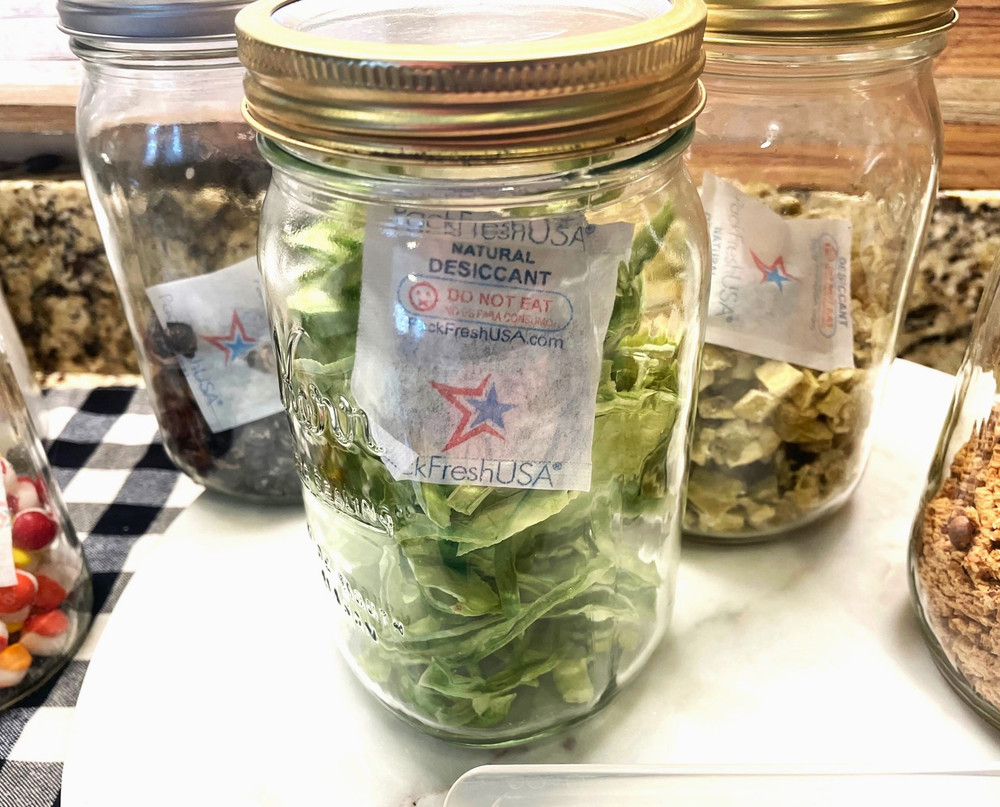Desiccants: Moisture Absorbers
Posted by Ola Griffin on Aug 15th 2023
A desiccant is a sachet designed to remove moisture from items. There are many different types of desiccants which can be found in new shoe boxes, medicine, electronics and more. Various types of desiccants are available, with silica gel being a commonly used material. However, it's important to note that many silica gel desiccants are not food grade. A lot of desiccants are often acid-processed and chemically synthesized. Those could transfer chemicals into your food.
Different Types of Silica Gel Desiccants
Blue silica gel desiccants are not food safe and are even prohibited in many countries due to their composition containing cobalt dichloride, a known carcinogen.On the other hand, there are orange silica desiccants that are considered non-toxic; however, they are not food-grade. There are multiple types of desiccants used in industrial industries that not only eliminate moisture but also target oils and other particles. All these types of desiccants are also not food-grade. There are even desiccants that will change colors once it has reached its absorbing limit. All these chemicals are not what I would want placed in a sealed container for years and years with my food. NO!
Desiccants offer incredible versatility and find numerous valuable applications. For instance, in ocean-crossing containers, sizable desiccant packs are employed to uphold product freshness. Masks utilize desiccants for particle filtration. They play a pivotal role in preventing metal corrosion, benefiting electronics. However, when it comes to food, I would ensure your food is not exposed to unnecessary chemicals.
Thankfully, There are a variety of food-safe silica desiccants out on the market. Yet, an even superior option exists for long-term food storage: food-safe desiccants using bentonite. I like these desiccants since they are food-grade and with bentonite, these are non-toxic, acid-free, environmentally friendly, and more. They are very effective and work amazingly.
Bentonite is categorized as GRAS (Generally recognized as safe) by the FDA.
PackFreshUSA Desiccants
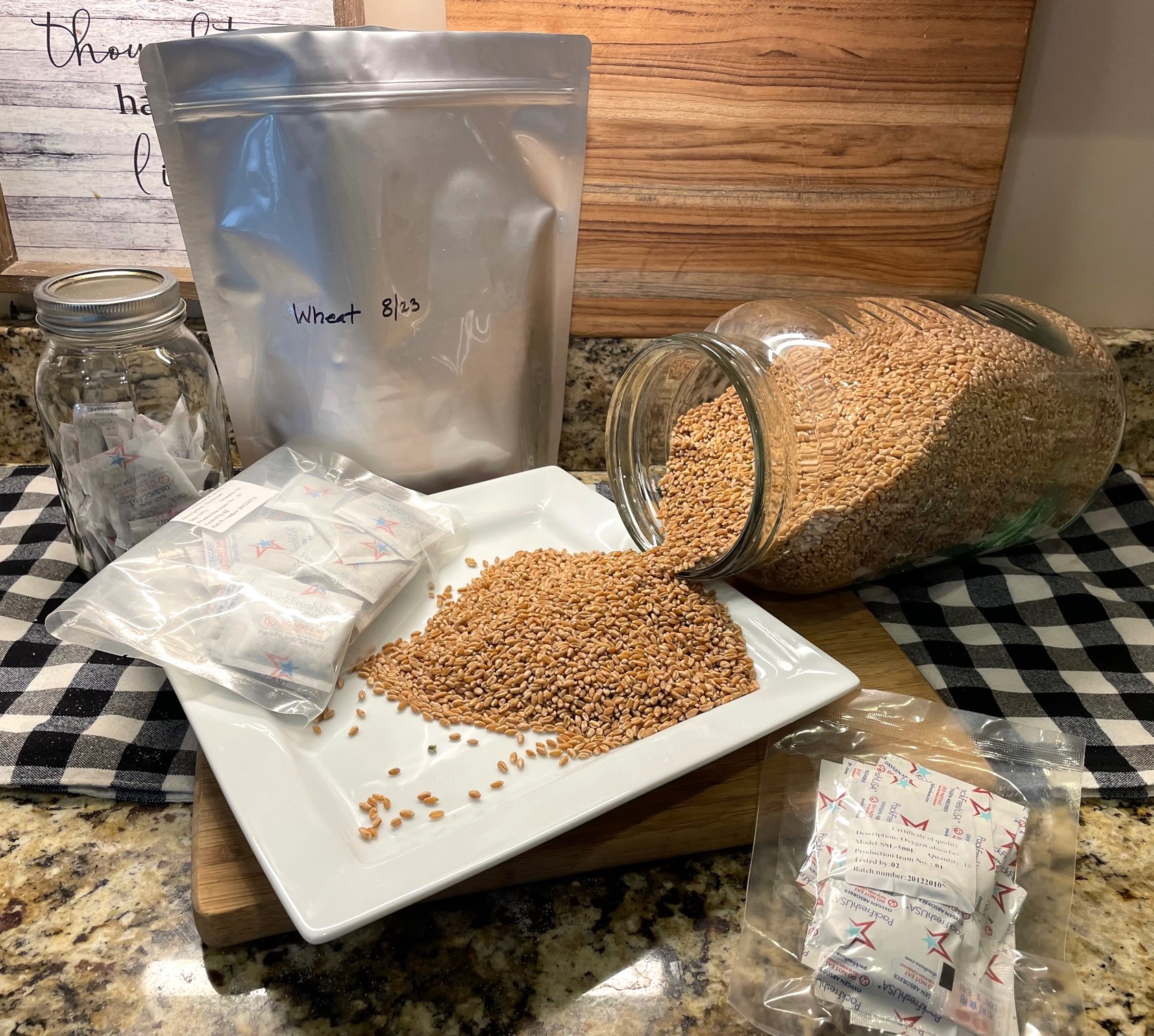
PackFreshUSA's food-safe and natural desiccants are not only remarkable but also food-safe. I utilize them in my 5-gallon buckets to preserve items like wheat and oats. I also use them in my Gallon Mylar bag but there is a trick to using oxygen absorbers and desiccants together. They are not friends, so place them at opposite ends!
Place the desiccant toward the bottom of your PackFreshUSA Mylar bag, then add the food on top, and finally the oxygen absorber. All that is left is to seal up the Mylar. Following these steps will allow the oxygen absorber to remove the oxygen before the desiccant removes the moisture. Oxygen absorbers have built in moisture to make them work; it is imperative to keep the desiccants separated from the oxygen absorbers.
Here is a link for a video where an oxygen absorber was added to my sugar, you can see the result. But adding a desiccant will then keep that sugar nicely protected from moisture.
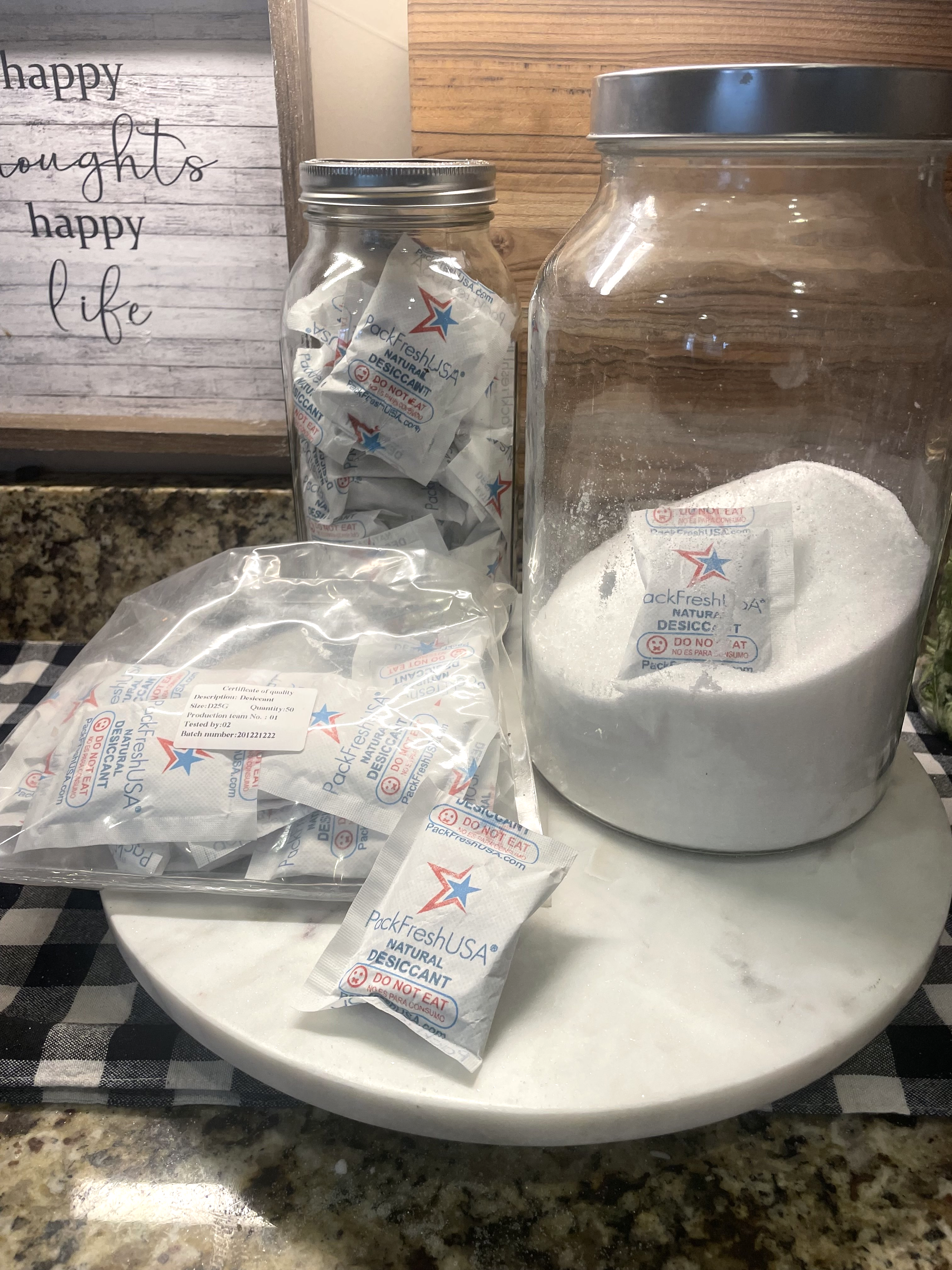
The Facts
PackFreshUSA’s all natural and food-safe desiccant not only outperforms the absorbing power of silica gel desiccants, it maintains its absorbing effectiveness for over 20 hours of storage time. Moisture is absorbed through a one-way, dust-free Tyvek bag, protecting from moisture damage, mold, insects, and other organisms.
Thanks to the remarkable capabilities of PackFreshUSA's Food-safe Desiccants, you can confidently ensure the safety and security of your preservation efforts. Rest easy knowing that you're utilizing an environmentally friendly desiccant that prioritizes safety.
Why desiccants are so important!
Food: Moisture creates an environment conducive to mold growth and the proliferation of various organisms. The utilization of desiccants effectively reduces or eliminates the moisture content within food, ensuring its safe preservation for extended periods.
Salt & Sugar: Both of these food items are particularly susceptible to moisture, and the inclusion of a desiccant, especially in your pantry's salt and sugar containers, can result in a finer texture and reduced likelihood of clumping. This practice can also be extended to your long-term storage of sugar and salt within Mylar bags. Remember, that these two items do not require the use of oxygen absorbers.
Using Desiccants in Other Ways
Other Uses: There are many other useful ways desiccants can help protect other items. As a prepper using desiccants with my ammunition storage, ensures I will not have rust build up on bullets and barrels. High humidity can cause issues with electronics, so desiccants can help keep your electronic equipment and its components dry.
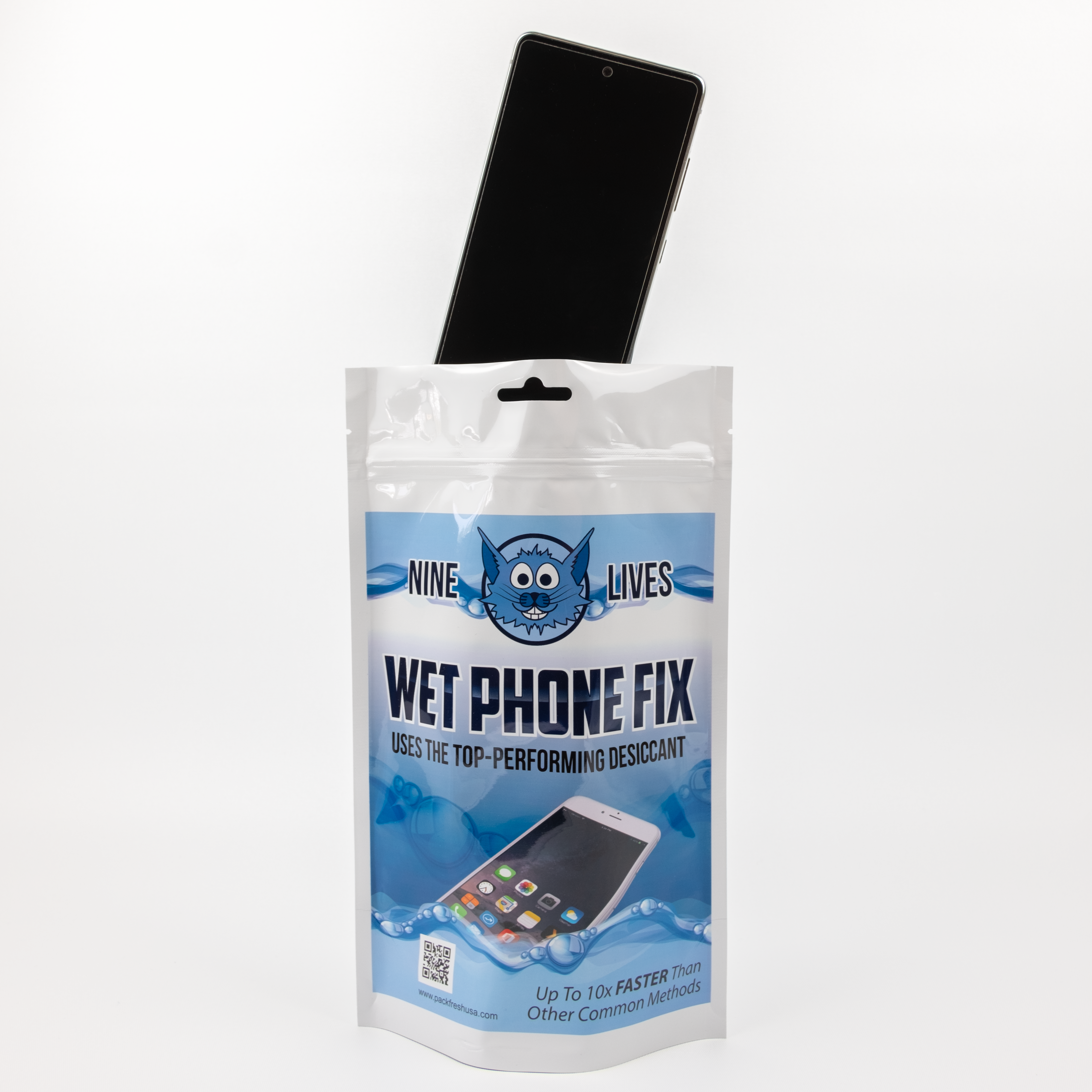
I love the PackFreshUSA’s Nine Lives Wet Phone Fix. This literally has saved a handful of my family's phones from water accidents. In-fact, I keep one in each of my cars, and I have several at home ready to use in case of an accidental water dunking.
Another use for desiccants is with clothing. Maintaining dry fabrics creates an ideal storage environment for clothes or other packaged items. Document preservation is yet another practical application. Museums and libraries also use desiccant to safeguard valuable items.
Freeze-dried Storage
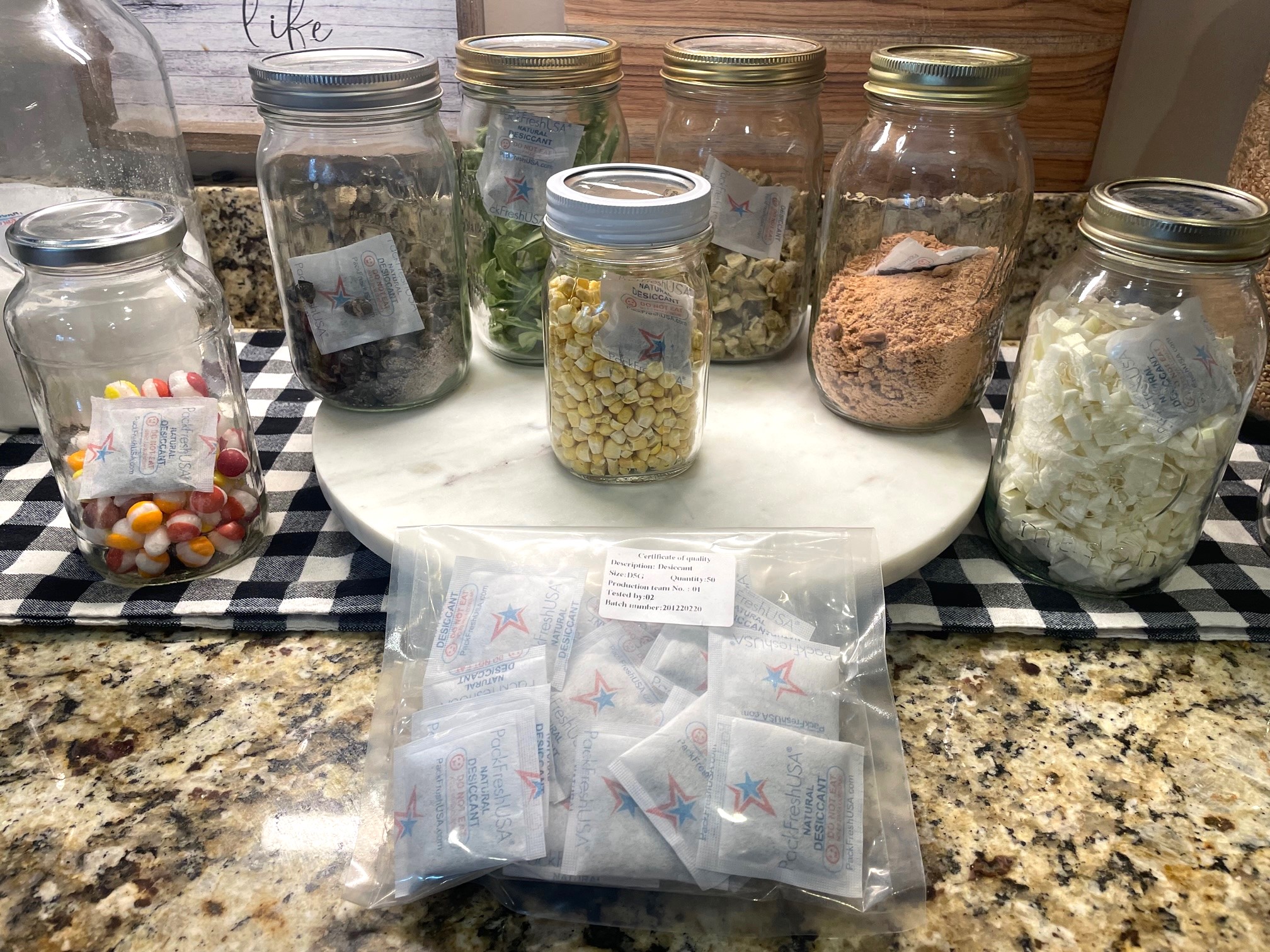
I use desiccants with freeze-dried goods that I am currently eating or storing in mason jars, especially when dealing with high humidity days. They work wonderfully, especially keeping the crispness in freeze-dried goods.
Since air has natural moisture that can cause issues with freeze-dried goods, your food will be affected by repeated opening and exposure to the air. Let's consider strawberries as an example: after placing them in mason jars or Mylar bags, each time the container is opened, a few strawberries are removed, and the lid is sealed or zipped. After multiple repetitions, the strawberries might become softer and lose their crispness. This effect primarily results from the moisture in the air over short periods, rather than from oxygen exposure. Adding a food-safe desiccant into a mason jar with the freeze-dried goodies, makes it last longer and have a better texture and taste.
I also will use desiccants temporarily while I am unloading my freeze-dryer trays. I know that on high humidity days, that will greatly affect my food. So, I will put my food in a plastic container and add a desiccant. I may keep that like that for several hours until the humidity is lower, and I can pack up for long-term or short-term storage.
Dehydrated Foods
I like using desiccants in mason jars where I am conditioning my vegetables or other items.
Conditioning involves placing freshly dehydrated items in mason jars for a span of several days to a week. During this time, I regularly inspect and shake the jar, closely observing for signs of moisture accumulation or wilting in the food. If so, then I place the items back onto dehydrator trays and dehydrate for several more hours. Shaking the jars allows the food to get mixed and the sound helps in spotting issues. Here’s a video on this topic. To illustrate, you can put dehydrated cubed carrots in a mason jar. This technique helps ensure that your food is fully or as fully dehydrated as it can be. Vegetables can hold onto moisture at their molecular level and release it after several days.
Using desiccant means you can ensure that if there is left over moisture, the desiccant will absorb the moisture and not your food. So, mildew on food will not occur. Adding desiccant to your long-term food storage items will ensure you have dried goods that can last for decades.
Requirement Chart Container Size
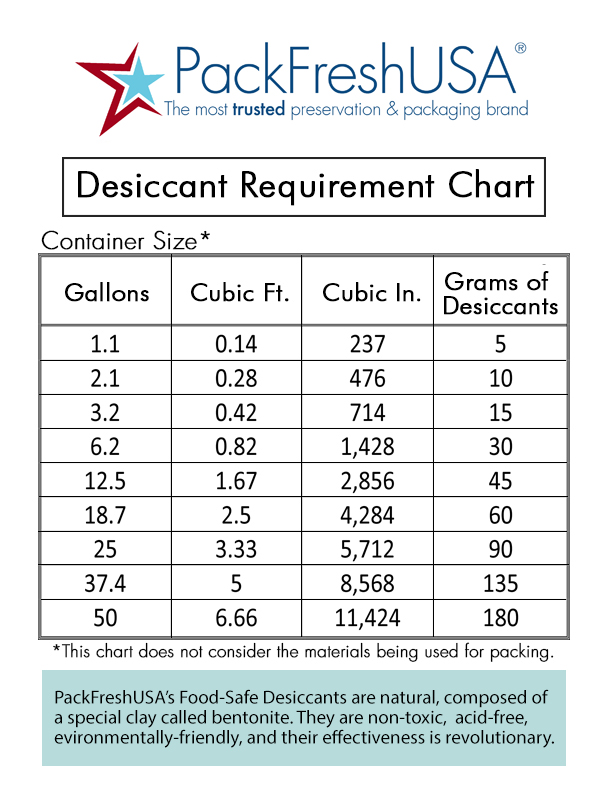
Happy prepping,
Ola Dee Griffin
Long-Term Food Storage Expert
Customer Service Dept.
Safeguard Brands, Inc., DBA PackFreshUSA.com
YouTube Creator(14) Pandemic Prepsters - YouTube
Website: PackFreshUSA.com
Cell: (951) 902-4644
Toll Free 5 Star Service Line: (844)8 5 STARS (844) 857-8277

